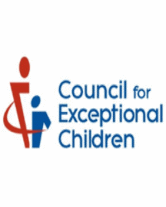Working with Emotionally and Behaviorally Challenged Students
The following techniques can be especially effective with students exhibiting emotional and behavioral disorders:
- Planned ignoring
Behaviors that are exhibited for the purpose of seeking attention and do not spread or interfere with safety or group functioning are most effectively extinguished through planned ignoring. This technique should never be used with aggressive behaviors. The class may need to be taught to do this as well. Peer attention can be even more powerful than adult attention for some students. - Signal interference
If a student is calm enough to respond, has a positive relationship with the teacher, and is free from uncontrollable pathological impulses, a nonverbal signal may be all that is necessary to assist him or her in regaining focus. - Proximity and touch control
Moving closer to a student in distress or placing a hand on the shoulder can be effective in showing support in a nonthreatening way. When using this technique, refrain from pointing out inappropriate behavior. Comment positively on any move toward compliance. - Interest boosting
Change the tempo or activity, comment on the student's work, or inquire about a known interest related to the assignment if a student shows signs of restlessness. Do this before off-task behavior occurs. - Hypodermic affection
Express genuine affection for, or appreciation of, a student to assist the student in regaining self-control. - Easing tension through humor
Humor can often stop undesirable behavior if it is used in a timely and positive manner. Sarcasm, cynicism, and aggression are not appropriate uses of humor. - Hurdle help
Before a student begins to act out, assist the student with a difficult section of an assignment or task. - Regrouping
Change the seating arrangement or the small-group assignments of students to avoid specific problems. Do this in a nonpunitive and, if possible, undetectable way. - Restructuring
If an activity is not successful, change it as quickly as possible. It is important to always have a backup plan. Sometimes it is best to move from an interactive game to something like Bingo that requires no interaction. This can be done smoothly and nonpunitively when a group is becoming overstimulated. At other times, offering a choice might be more effective. Students could choose to cover information orally through discussion, or copy notes from an overhead, for example. - Direct appeal
If a student or group has a positive relationship with the teacher, it is sometimes effective just to ask that a behavior stop due to the problems that it is creating. No consequence or reward is intended or implied. This is a simple, straightforward request from one person to another. - Antiseptic bouncing
Remove a student from a distressing situation before inappropriate behaviors occur. Be careful not to inadvertently reward a student who is instigating a problem. - Support from routine
Schedules and routines are often overlooked by adults when considering behavior management interventions. Knowing what to do and when to do it provides structure, security, and predictability in the lives of students who may not experience such support in other areas of their lives. - Limiting space and tools
Rather than taking away items that distract or create potential harm after a student is engaged with them, keep them out of sight and reach from the beginning. This is especially important when tantrums might escalate to unnecessarily dangerous or reinforcing proportions, if too many items are available for throwing and breaking.
Excerpted from Back Off, Cool Down, Try Again: Teaching Students How to Control Aggressive Behavior.








